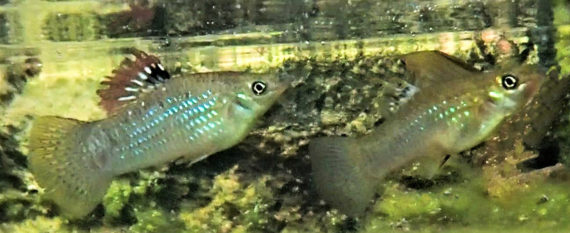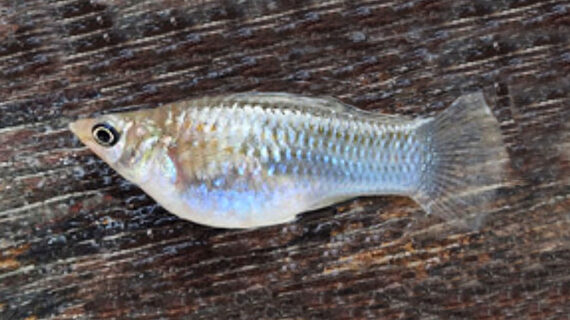Mangrove Molly, Poecilia orri
 Mangrove Molly, Poecilia orri, Female and Male. Underwater photographs taken in coastal waters of Yal-Ku, Quintana Roo, April 2016. Photograph courtesy of Juan Rojo, Akumal. Identification courtesy of Dr. John Lyons, University of Wisconsin, Madison, Wisconsin.
Mangrove Molly, Poecilia orri, Female and Male. Underwater photographs taken in coastal waters of Yal-Ku, Quintana Roo, April 2016. Photograph courtesy of Juan Rojo, Akumal. Identification courtesy of Dr. John Lyons, University of Wisconsin, Madison, Wisconsin.
 Mangrove Molly, Poecilia orri, Female. Underwater photographs taken in coastal waters of Yal-Ku, Quintana Roo, April 2016. Catch, photograph and identification courtesy of Eli (obsessiveangling.wordpress.com).
Mangrove Molly, Poecilia orri, Female. Underwater photographs taken in coastal waters of Yal-Ku, Quintana Roo, April 2016. Catch, photograph and identification courtesy of Eli (obsessiveangling.wordpress.com).
The Mangrove Molly, Poecilia orri, is a member of the Livebearer or Poeciliidae Family, and is known in Mexico as topote de manglar. Globally, there are forty species in the genus Poecilia, of which six are found within all Mexican freshwater and brackish drainage systems of the Atlantic Ocean.
The Mangrove Molly has a moderately robust to elongated head and body that becomes moderately compressed near the rear. The top of the head and back are a dark blue, the sides steel gray and there is a faint row of orange spots on the sides. The males have a dark oval spot above the pectoral fin base and large spots on the caudal fin base. They occur in 2 distinct forms that reside in different habitats: 1. The caudal and dorsal fins are yellow with scattered black spots on the fin membranes. 2. The caudal fin is a deep red with a black margin and large black spots on the inner two-thirds of its membrane; the interior of the dorsal fin is black with white spots and the exterior is a deep red with a black margin and a few black spots. Their heads are flattened with small terminal slightly oblique mouths that are equipped with an outer row of large backwards pointing teeth with expanded tips and several rows of small pointed teeth with a projecting lower jaw and a protractile upper jaw. Their anal fins have 8 or 9 rays and in females originate under and in males, which is modified to include a short but elongated gonopodium (sex organ), a little behind the dorsal fin; the caudal fin is rounded; the dorsal fin has 9 or 10 rays and a short base with its origin behind the pelvic fins; the pectoral fins are high on the flank; and, the pelvic fins originate well behind the pectoral fins. They are covered with relatively large scales.
The Mangrove Molly is found in fresh, brackish and salt water in lagoons, within mangroves and over sandy beaches. They are a non-migratory benthopelagic that is found in freshwater and brackish water environments. The Mangrove Mollies reach a maximum of 7.3 cm (2.9 inches) in length. They are omnivores consuming plant detritus and small crustaceans, insects and annelid worms. In turn they are preyed upon by various pelagic and surface predatory fishes as well as numerous sea birds including herons. The Mangrove Molly is poorly studied with very limited information available about their lifestyle and behavioral patterns including specific details on age, growth, longevity, movement patterns, diet, habitat use, and reproduction.
The Mangrove Molly is a resident of Mexican waters of the Atlantic but has a limited distribution being found only along the East Coast of the Yucatán Peninsula in the Caribbean.
The Mangrove Molly is most likely confused with the Pentén Molly, Poecilia pentenensis, the Shortfin Molly, Poecilia mexicana, and the Yucatán Molly, Poecilia velifera, however all three lack the spotting found on the sides of the Mangrove Molly.
From a conservation perspective the Mangrove Molly is currently considered to be of Least Concern with stable, widely distributed populations. They are small in stature and of limited interest to most, however they are utilized by the aquarium trade on a limited basis.